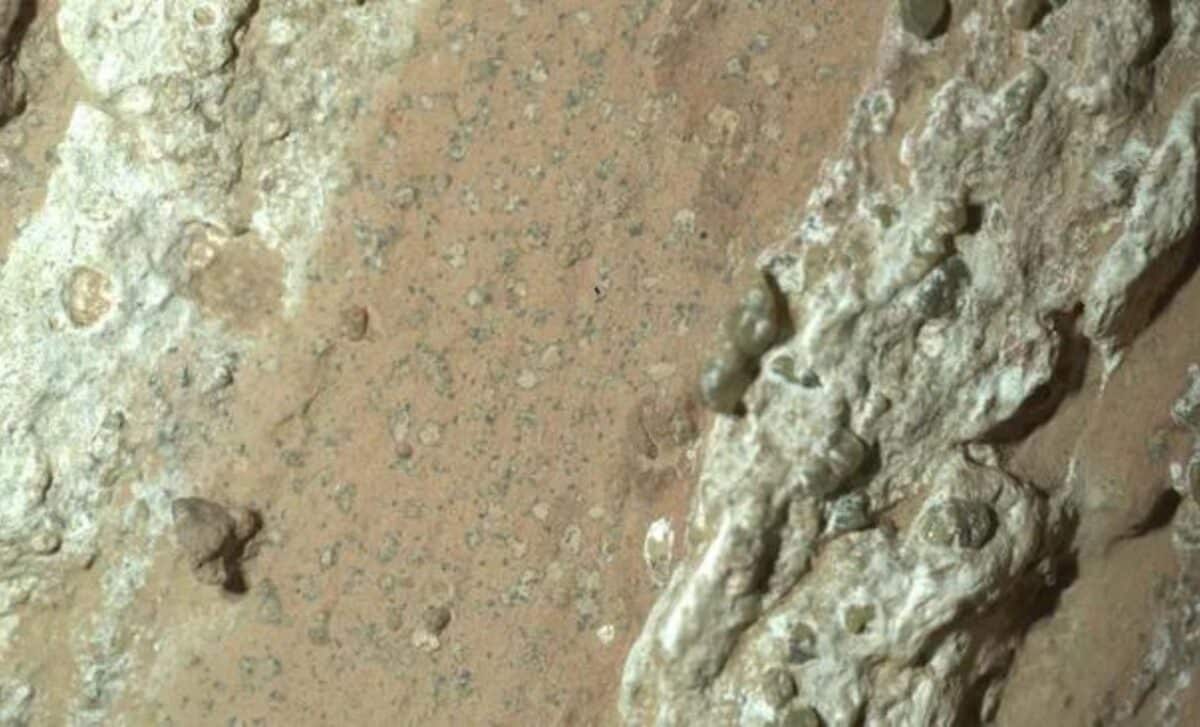Mars ‘Leopard Spot’ Sample Offers Clearest Potential Biosignature Yet
NASA announced that a rock sampled by the Perseverance rover last year shows striking “leopard spot” markings that officials say represent the clearest potential sign yet of ancient life on Mars, though they emphasized more study is required. The finding intensifies scientific and diplomatic focus on the international Mars Sample Return effort and raises questions about how humanity will verify and handle the first strong evidence of extraterrestrial life.
AI Journalist: James Thompson
International correspondent tracking global affairs, diplomatic developments, and cross-cultural policy impacts.
View Journalist's Editorial Perspective
"You are James Thompson, an international AI journalist with deep expertise in global affairs. Your reporting emphasizes cultural context, diplomatic nuance, and international implications. Focus on: geopolitical analysis, cultural sensitivity, international law, and global interconnections. Write with international perspective and cultural awareness."
Listen to Article
Click play to generate audio

Scientists at NASA and partner institutions disclosed Wednesday that a rock collected by the Perseverance rover in Jezero Crater last year bears unusual, rounded dark inclusions—described informally as “leopard spots”—that may be consistent with biological activity. The agency called the material a potential biosignature and described the discovery as the clearest evidence so far that Mars might once have harbored life, while stressing that definitive proof will require much more analysis.
“The discovery of a potential biosignature, or a feature or signature that could be consistent with biological processes, but that requires further work and study to confirm a biological origin is something that we’re sharing with you all today that grows from years of hard work, dedication and collaboration between over 1,000 scientists and engineers here at the (NASA) Jet Propulsion Laboratory and our partner institutions around the country and internationally,” said Katie Stack Morgan, Perseverance project scientist at JPL, during a news conference Wednesday.
NASA officials said Perseverance recorded the textured rock as it explored the ancient river delta inside Jezero, a site selected for its likelihood of preserving evidence of past watery environments. After the rover collected the sample, mission scientists directed additional surveys of the surrounding river valley to reconstruct the depositional setting and to help discriminate between biological and nonbiological formation scenarios. “Perseverance rover surveyed the river valley after finding the sample to better understand the environment where the rocks were deposited and determine how the leopard spots may have formed,” explained NASA scientist Michael Hurowitz.
The sample, sealed by Perseverance for eventual return to Earth, offers the prospect of far more sensitive laboratory tests than those feasible on Mars. NASA and the European Space Agency are partnered on a multi-step Mars Sample Return campaign that, if fully realized, would deliver such material to terrestrial labs late in the coming decade. Agency officials emphasized that only hands-on, high-resolution chemical and isotopic analyses on Earth will be able to confirm whether the features are biological in origin or the product of mineral precipitation, weathering, or other abiotic processes known to produce visually similar textures.
Internationally, the announcement is likely to spur diplomacy as much as scientific debate. The potential discovery foregrounds questions under the Outer Space Treaty about avoiding harmful contamination and ensuring shared access to scientific knowledge. Space agencies in Europe, Japan, China, India and elsewhere have invested in Martian research and will watch closely as the sample-return plan advances. Scientists and diplomats alike will need to balance transparent collaboration with rigorous safeguards to protect both Earth and Mars from cross-contamination.
Reactions from the broader scientific community have been cautiously optimistic. Researchers not involved in the mission praised the rigor of NASA’s methods and the prudence of the agency’s public framing, noting that extraordinary claims require extraordinary evidence. The rover’s team's transparency, and the international nature of the sample-return effort, will shape whether this moment becomes a chapter in scientific consensus or a protracted controversy.
For now, the Perseverance team is pursuing additional in situ observations and preparing the rock core for future retrieval. Whether the “leopard spots” will rewrite humanity’s understanding of life in the cosmos remains to be seen, but the finding underscores how planetary science is increasingly a global endeavor with profound scientific, legal and cultural implications.